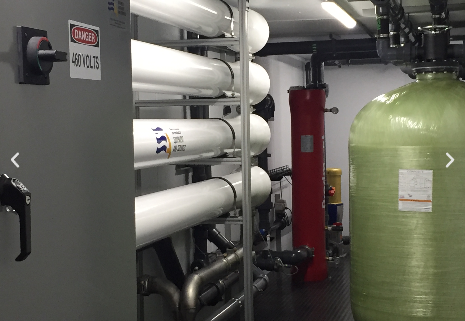Unlocking the Best: Desalination Reverse Osmosis
Modern technology has transformed the process of converting saltwater into fresh, drinkable water through reverse osmosis (RO) desalination. A viable way to address the growing demand for freshwater in coastal areas and desert climates is RO desalination, as water shortage becomes a more urgent global concern.
Through the use of a semipermeable membrane, reverse osmosis purifies water by eliminating molecules, ions, and other contaminants from seawater. The method of reverse osmosis (RO) involves applying external pressure to reverse the natural flow of water across a semipermeable membrane from an area of low solute concentration to a region of high solute concentration.
A semipermeable membrane, which traps salts, minerals, and other impurities while allowing water molecules to flow through, is pushed through a RO desalination system at high pressure. On one side of the membrane, the concentrated brine—which has the contaminants removed—is released, and on the other, the cleaned water, or permeate, is collected.
Before entering the RO membranes, seawater is subjected to pre-treatment procedures including filtration and chemical dosing to get rid of biological pollutants, organic compounds, and particulates. Good semipermeable membranes keep out dissolved salts and other contaminants while letting water molecules flow through their tiny pores.
The desalination process requires high pressure, which is maintained by pressure vessels housing the RO membranes. To guarantee that the water quality fulfills regulatory criteria before distribution, the RO membrane permeability undergoes post-treatment procedures such as remineralization and disinfection.
Desalination Reverse Osmosis: The Process
High-quality freshwater is produced using RO desalination, which yields high salt removal efficiency, often surpassing 99%. RO systems may be expanded and designed in a flexible way to accommodate changing water demand needs because they are scalable and modular. Energy consumption and operating expenses have been drastically lowered by advances in RO technology, including as energy recovery devices and better membrane materials. Lower energy usage and brine discharge quantities are two of the environmental benefits of RO desalination over more conventional techniques like thermal distillation.
System efficiency might be decreased and frequent maintenance is needed when there is fouling of RO membranes caused by the buildup of organic debris, mineral deposits, and biological development. Thermal distillation uses less energy than RO desalination, although both processes still need a lot of energy, especially high-pressure pumping and membrane operation. Increased salinity levels and habitat disruption in receiving water bodies are two negative effects of disposing of concentrated brine produced during the desalination process. For large-scale facilities in particular, the initial capital outlay for building RO desalination plants can be substantial and includes membrane modules, pumps, and infrastructure.
System lifespan and efficiency are expected to rise with the development of next-generation RO membranes that have greater durability, more permeability, and more fouling resistance. Brine discharge streams can provide energy that can be used to minimize overall energy consumption through the integration of energy recovery devices like turbine generators and pressure exchangers. Resource usage can be maximized and environmental consequences can be minimized through the application of creative brine disposal and resource recovery techniques such as mineral extraction, aquaculture, and brine concentration.



